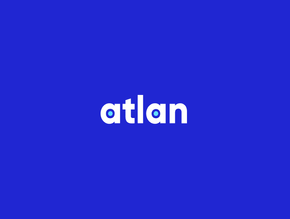Democratisation of AI: The rise of no-code AI platforms

With increased use of AI, paired with a shortage of workers with tech skills, no-code AI platforms have emerged as a transformative opportunity for businesses.
Democratising access to advanced AI capabilities, these user-friendly platforms allow individuals with minimal or no coding skills to create AI applications through intuitive interfaces. By eliminating the complexities traditionally associated with AI development, no-code platforms are levelling the playing field, enabling a broader range of people to harness the power of AI for various applications.
“Since the no-code AI platform enables organisations to employ AI to automate operations, they can accomplish more with less effort,” says a report by ReportLinker, which suggests the global no-code AI platform market size could reach US$17.5bn by 2030.
“No-code AI platforms have been a crucial tool for enabling people to communicate with and construct AI platforms for their job. Hence, more businesses now use no-code AI platforms, which is boosting the expansion of the market.”
The rise of no-code AI tools
"No-code/low-code (NCLC) AI tools are essentially any tools that allow automation of coding efforts through plug-and-play or drag-and-drop UI," explains Jody Bailey, Stack Overflow’s Chief Technology Officer. These platforms are designed to be user-friendly, enabling individuals with little to no coding skills to solve specific business issues.
Amitha Pulijala, Vice President of Product at Vonage, adds another layer to this definition. “NCLC tools are used for designing and developing an application using intuitive ‘drag and drop’ tools that eliminate the need for advanced code development,” she states. According to Pulijala, these tools are not just time-savers. “In recent years, these tools have become popular because of their ability to accelerate development and offer greater choice to users. Not only do NCLC tools save developers time by eliminating the need to write lines and lines of code, they also minimise the chance of encountering bugs, as the templates have already been tested.”
An interesting thing about this new explosion of AI this year is just how accessible it is to non-technical users, adds Conor Egan, Vice President of Product and Engineering at Contentstack. “Until now, we had this preconceived notion that AI was this scary, complex thing that only highly-skilled developers could access and benefit from. Now, we have one of the most expensive, computationally intensive systems ever created, ChatGPT, available to everyone and accessible just by chatting with it.
“Simply put, low-code/no-code AI tools means it requires little to no technical code to create or deploy an AI application. Not only does it simplify processes by reducing technical headaches for developers, business analysts and domain experts, but it makes it more accessible to non-technical users too.”
Democratising access to AI: Levelling the playing field
The democratisation of AI is one of the most compelling benefits of no-code platforms. “The hope of a low-code/no-code solution for AI is simply the hope that you can level the playing field and allow someone to create AI applications without the necessary training, skills or experience of writing technical code,” says Bailey.
Pulijala agrees, stating that no-code tools have “democratised access to AI,” enabling individuals and organisations with limited software expertise to develop AI-powered solutions. “Business analysts, for example, can fully participate in the development of the AI project, without relying on the technical expertise of the software team,” she adds.
Egan observes that these platforms have made AI “accessible to non-technical users,” thereby lowering both technological and financial barriers. “The real cost of using these systems is also often quite low, making neither technology nor cost a barrier,” he notes.
The Generative AI revolution
Generative AI tools like ChatGPT have significantly influenced the no-code AI landscape. “We believe Generative AI will democratise coding and grow the developer community by several folds,” says Bailey. “If there are 20-25m developers now, this could lead to a 10x growth of this important group.”
Pulijala points out that generative AI has “dramatically improved the process of setting up applications,” particularly in the development of chatbots. “Generative AI cuts down this process time with pre-trained LLMs, meaning that developers no longer need to train the bot on how customers can ask questions,” she elaborates.
Egan finds generative AI especially powerful when combined with automation. “When you build generative AI into those workflows and have it interpret, summarise, categorise or deploy everyday tasks, you’re enabling individuals with minimal coding experience to harness the capabilities of advanced AI models and, ultimately, become more efficient and unlock more possibilities,” he explains.
Scalability and the future
When it comes to scalability, Bailey believes that both small businesses and large enterprises can benefit from no-code AI solutions. “Large enterprises are interested in leveraging GenAI in combination with high trust data/knowledge sources to drive efficiency, productivity and unlocking capacity for product innovation,” he notes.
Pulijala suggests that more complex use cases may benefit from custom development. "Developers should assess the specific needs of the problem they are solving and carefully assess the needs and constraints of the use case when choosing no code/low code solutions," she advises.
As Egan concludes, it’s important to remember that no-code AI is not a quick fix: it still requires time and training. “Just because you don’t have to code doesn’t mean it’s simple and some tools will still require a learning curve for someone that’s not technical. Not only that, no-code/low-code is not a replacement for coding and will not replace developers. The main benefit that NC/LC, AI, and composable tools bring is efficiency and speed.
“The biggest challenge faced by enterprises today is meeting customer demands. With the rise of AI and automated tools, teams can collaborate more easily, be more productive and adapt to the changing industry landscape.”







